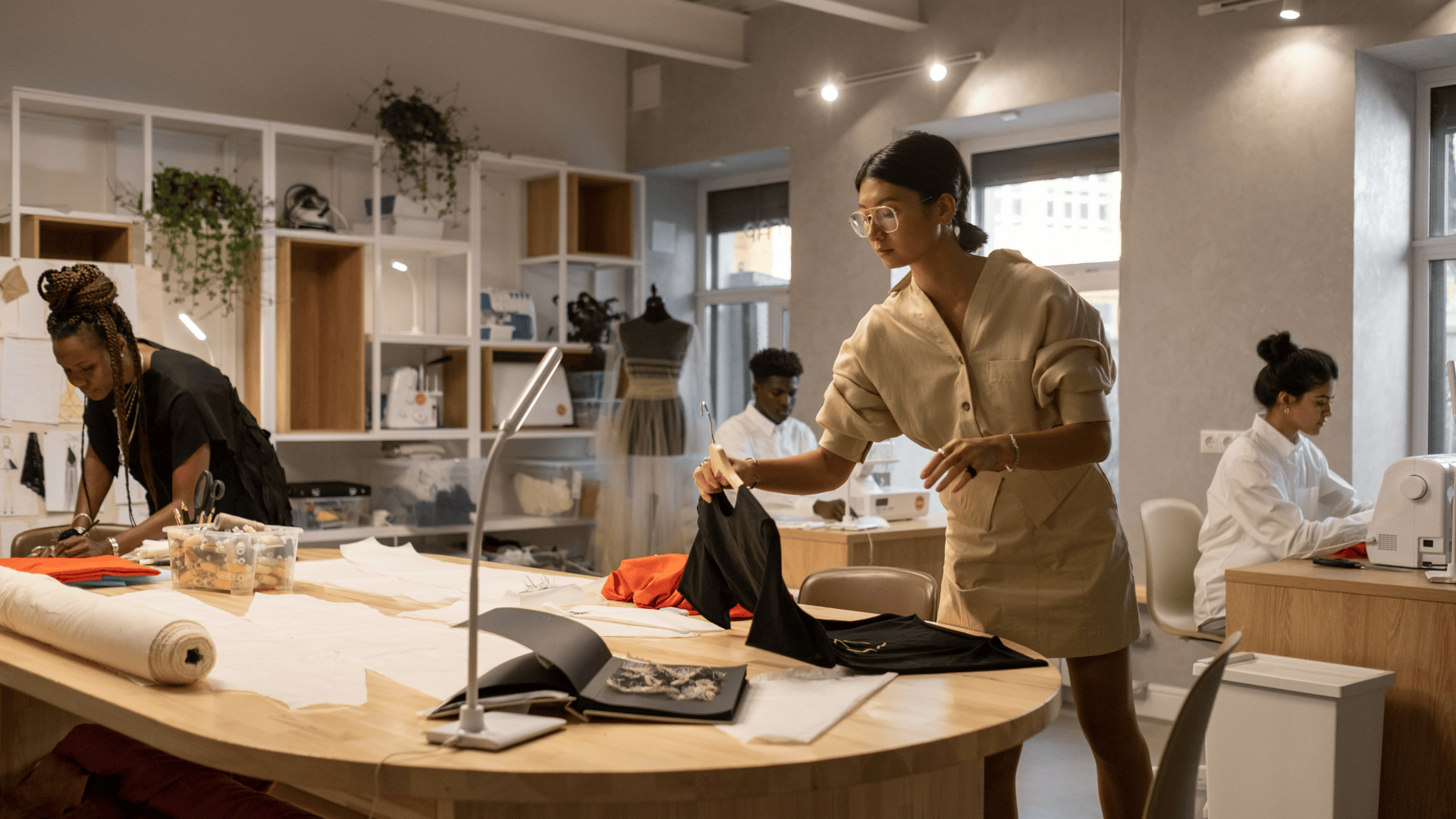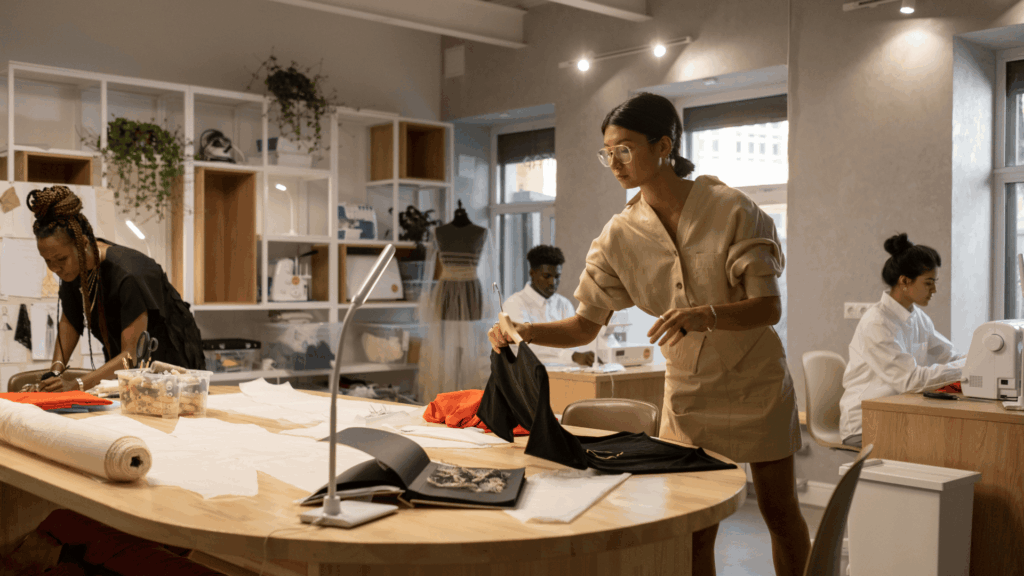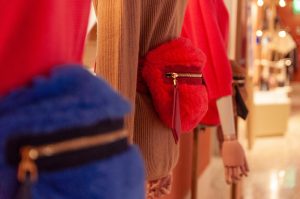Fast fashion made clothes easy to buy but even easier to forget. Maybe you’ve felt it too—that pull toward something made with real care.
The hand-stitched detail, the perfect drape, the story woven into every seam. Around the world, more people are swapping quantity for quality, and designers are answering with pieces built to last.
In this article, we’ll explore why craftsmanship is becoming the new measure of luxury, and how it’s reshaping fashion values everywhere.

Craftsmanship Over Quantity: A Global Shift in Fashion Values
Craftsmanship as the New Luxury Standard
Luxury used to be defined by the label on the tag. Now, it’s defined by the work in the seams. As Heba Al Fazari, Founder & CEO of Coveti, puts it, “In a world flooded with mass-produced clothing, craftsmanship has become the true mark of luxury. Consumers now crave the human touch — the hand-stitched detail, the cultural narrative, the limited run. At Coveti, we champion designers whose work isn’t just worn but preserved, like art. It’s a return to fashion with soul.”
This shift means the real value of a garment is in how it’s made—not just how it looks. Hand-stitching, artisanal dye techniques, and custom tailoring are being celebrated as signs of authenticity.
Small-run collections are prized not only for their rarity but for the care each piece receives. The buyer isn’t just purchasing an item—they’re taking home hours of skilled work, cultural history, and a story they can pass on.
Read More:
The Appeal of the Human Touch
When you hold a piece that’s been made by hand, you can feel the difference. The stitching isn’t just there to hold fabric together—it’s been placed with intention. The way the fabric falls has been considered, tested, and adjusted until it sits just right. Even the tiniest variations between pieces tell you a person was behind it, not a machine spitting out thousands at a time.
That’s what people are looking for now. Clothes with a human fingerprint. A jacket that’s been hand-finished at the collar. A dress where the pattern matches perfectly at every seam because someone took the time to line it up. These details don’t shout, but they’re the reason you reach for that piece again and again.
You also end up caring for it differently. You hang it properly. You spot-clean it instead of tossing it in the wash. You make sure it lasts—because it’s worth keeping. And once you’ve experienced that level of quality, it’s hard to go back to something that was rushed off a production line.
Sumeer Kaur, Founder of Saree says, “Social media has only made it clearer. Seeing the process—an artisan weaving fabric by hand, a tailor shaping a lapel—shows you exactly where the value comes from. It’s not hype. It’s hours of work, skill built over years, and pride in doing something properly.”
Limited Runs as a Statement of Value
Small-batch production changes how you see clothes. When you know there are only 30 of a certain coat in the world, it’s not just another item in your wardrobe—it’s something you’ve chosen to own and look after. That scarcity makes it special, says Wojciech Ratajczak, CEO of EssayService.com.
For designers, limiting production means they can focus on getting every detail right. They’re not chasing volume; they’re chasing quality. They can reject a fabric that doesn’t meet their standards or spend more time perfecting the fit. You get something that’s been checked, adjusted, and approved with care—not just pumped out to meet a quota.
It’s also better for the planet. Fewer pieces made means less fabric wasted, fewer unsold items, and no mountains of stock headed for clearance bins or landfill. Every piece is made with a buyer in mind, whether it’s through pre-orders or tight runs that sell out quickly.
For you, it means your clothes aren’t interchangeable with what everyone else is wearing. You’re not just buying something to fill a gap—you’re curating. And when your wardrobe is built that way, it reflects you, not just the trends of the moment.
Cultural Narratives in Craft
The best pieces don’t just look good—they tell you where they came from. A scarf woven with patterns passed down through generations. A jacket cut from fabric dyed using a centuries-old technique. These aren’t just design choices; they’re cultural markers. They carry history, identity, and a connection to the people who made them, says Chancellor Fischer, Ops Manager at Vape Cloud.
Designers who work this way aren’t just making clothes; they’re keeping traditions alive. They source materials from local artisans, learn the methods, and then reinterpret them for a modern audience. You end up with something that feels rooted but still relevant. It’s not about nostalgia—it’s about showing that heritage still has a place in today’s fashion.
As a buyer, owning a piece like this feels different. You’re not just wearing a style—you’re wearing a story. And that story becomes part of yours every time you put it on. It sparks conversations, it gets noticed for the right reasons, and it stands apart in a world of lookalike clothes.
Investing Time, Not Just Money
True craftsmanship takes time, and that’s part of its value. A hand-stitched leather bag might take days to assemble. A tailored suit could require multiple fittings and weeks of work before it’s ready. That slower pace is what allows for better design, better fit, and better durability, says Chris Muktar, Founder & CEO of Userbird.
When you buy into craftsmanship, you’re accepting that good things aren’t instant. You might wait a few weeks for a made-to-order dress, but what you get will fit you properly, feel better on, and last for years. That’s a different mindset from fast fashion’s “wear it tonight” approach.
The time investment isn’t just on the maker’s side—it’s yours too. You choose carefully, knowing this isn’t an impulse buy. You’re adding something to your wardrobe that’s going to stay there. And because you’ve waited for it, you value it more. It’s the opposite of disposable—it’s something you keep, wear often, and even repair if needed.
The Shift in Consumer Priorities
For years, fashion marketing pushed the idea of more—more styles, more drops, more reasons to buy. But that’s starting to change. People are realizing that a wardrobe full of “almost right” pieces isn’t worth much.
Instead, the focus is shifting toward owning fewer things that are exactly right. That means better fabrics, stronger stitching, and designs that still feel relevant after years, not weeks.
Marissa Burrett, Lead Design for DreamSofa explains, “Social media has played a big role in this shift. It’s easier than ever to see the difference between a garment made to last and one that’s built for a quick sale. Detailed close-ups, side-by-side comparisons, and behind-the-scenes videos have opened people’s eyes to what quality actually looks like. This has made buyers more informed—and less willing to settle for disposable.”
You can see it in how people shop now. They’re asking more questions, checking fabric content, and looking for brands that offer repairs or alterations. They’re also willing to spend more if it means getting something that won’t need replacing anytime soon. It’s not about chasing every trend—it’s about building a wardrobe that works for the long haul.
Craftsmanship Meets Modern Innovation
The rise of craftsmanship doesn’t mean turning away from technology—it means using it to make skilled work even better. Designers are combining traditional techniques with modern tools to streamline certain steps without losing the human element. In much the same way a UK rebar mesh supplier blends strength with precision engineering to reinforce structures, fashion brands are finding ways to merge durability and artistry.
For example, 3D patterning can ensure a perfect base fit, while hand-finishing adds individuality. Laser cutting can create precise shapes, and then artisans assemble and detail them by hand.
This blend allows brands to keep production efficient without sacrificing quality. It also opens up possibilities for new designs that wouldn’t be possible using only traditional methods.
A handwoven fabric might be paired with cutting-edge dye technology to achieve colors that last longer. A classic leather shoe could incorporate a modern comfort insole without changing its look.
For the buyer, this means you get the best of both worlds: the precision and innovation that tech can provide, and the warmth and uniqueness that only human craftsmanship can deliver. It proves that progress in fashion doesn’t have to mean losing the soul of the garment—it can enhance it.
The Role of Transparency in Craft Value
When you know exactly how something is made, it changes how you see it. Transparency isn’t just a marketing trend—it’s a way to help people understand the value of the work. Brands that open their doors, show their workshops, and introduce the makers give buyers a reason to trust both the process and the price.
Julian Lloyd Jones, from Casual Fitters says, “Seeing a garment go from raw fabric to finished piece puts its cost into perspective. You see the hours of cutting, stitching, pressing, and detailing. You see the skill needed for each step. And when you’ve seen that, you’re far less likely to treat the piece as disposable. Transparency builds respect, and respect leads to better care and longer ownership.”
Conclusion
The shift from quantity to craftsmanship is more than a passing trend—it’s a correction. People are tired of clothes that feel generic and wear out too soon. They want garments with depth, made by skilled hands, built to last, and worth preserving.
Craftsmanship delivers all of that. It connects you to the maker, gives meaning to what you wear, and turns clothing into something closer to art. In a market flooded with the forgettable, these are the pieces you remember—and keep.

fashionabc is a fashion technology platform, comprising a digital directory and various other digital tools and supply chain solutions for the fashion industry ecosystem, that focus on ethical fashion and sustainability. We are building inclusive digital transformation tools for fashion professionals who are willing to take steps towards a more sustainable ethical fashion industry, by adopting AI and DLT blockchain technology.
* building digital profile and IP solutions for fashion businesses
* tackle issues such as provenance and counterfeit in supply chain
* contribute to the construction of a meritocratic ethical fashion industry which is certified and part of the circular economy











